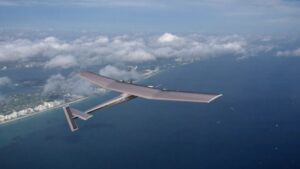
Revolutionizing Mobility: The WalkON Suit F1 Empowers Paralyzed Individuals
The realm of mobility aids is witnessing a transformative era, driven by technological advancements aimed at improving the lives of individuals with disabilities. One of the most notable innovations in this field is the WalkON Suit F1, a pioneering exoskeleton created by the Korea Advanced Institute of Science and Technology (KAIST). This article explores the remarkable features, development journey, and potential impact of this cutting-edge wearable robot.
A Leap Towards Independence
Imagine a world where an exoskeleton not only assists you in walking but also approaches you autonomously. The WalkON Suit F1 is designed with a unique front-docking system that allows users to don the suit while remaining seated in their wheelchairs, eliminating the need for assistance. This innovation is a significant leap toward fostering independence for individuals with mobility challenges.
Smart Engineering for Stability
At the heart of the WalkON Suit F1 is a sophisticated balance control system that actively manages its center of weight, ensuring stability as the user transitions from sitting to standing. This feature is crucial for enhancing user confidence. Additionally, the suit’s motor technology has seen significant upgrades, with output density doubling compared to prior models. This advancement means that more power can be packed into a compact design, essential for a wearable device.
Adaptive Technology Meets AI
One of the standout features of the WalkON Suit F1 is its integration of artificial intelligence. An onboard neural network application allows the suit to adapt to different users and environments, enhancing usability. Moreover, its vision recognition system enables the exoskeleton to identify and navigate obstacles, providing an additional layer of safety and independence for the wearer.
Homegrown Innovation
KAIST’s commitment to innovation is evident in the domestically produced core components of the WalkON Suit F1. This includes advancements in the motor, reducer, motor driver, and main circuit, with the performance of the motor driver being three times superior to previous international technologies. Such achievements signal a significant milestone in the field of assistive technology.
Proven Performance: The Cybathlon Triumph
You may be curious about the practical effectiveness of the WalkON Suit F1. The answer lies in the Cybathlon, an event akin to the Olympics for assistive technologies. In the 2024 Cybathlon, the WalkON Suit F1 not only participated but excelled, with pilot Seunghwan Kim completing a series of challenges in just six minutes and 41 seconds. These challenges included maneuvering between narrow chairs and performing tasks in a kitchen—all accomplished without the need for crutches.
A Visionary Leader in Robotics
Professor Kyoung-Chul Kong, a key figure in the development of the WalkON Suit, has been dedicated to exoskeleton research since 2015. The original WalkON Suit debuted in 2016, and by 2020, the team had achieved speeds of 1.98 mph with the WalkON Suit 4.0—an impressive feat for a wearable device.
Looking Ahead: The Future of Mobility Technology
The WalkON Suit F1 represents a significant milestone in providing independence and mobility to individuals with paraplegia. As Professor Kong aptly states, it embodies “the culmination of wearable robot technology for the disabled,” setting new benchmarks for the industry. The future holds exciting possibilities, and one can only imagine how these suits might one day enhance daily life for many.
Join the Conversation
What are your thoughts on innovations like the WalkON Suit F1? How do you see advancements in assistive technology shaping the future for individuals with disabilities? We invite you to share your insights and engage with us.
For more updates on technology, mobility aids, and security alerts, consider subscribing to our newsletter. Stay informed and connected as we continue to explore the intersection of technology and everyday life.

